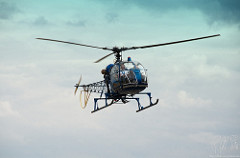Are Helicopters Affected by Weather?
Posted in Helicopter Accidents on August 11, 2016
Just like anything flying in the sky, weather has a major impact on how a helicopter handles its flight. Bad weather conditions can jeopardize the safety of a helicopter, so it’s important for pilots to be aware of the conditions. A safe flight requires good weather conditions, but weather can change quickly, so it is important for pilots to take extra precautions when bad weather hits.
Weather that affects a helicopter’s flying and safety
Fog, Rain, and Snow
Fog, rain and snow affect a pilot’s visibility, making it very dangerous to fly in. It’s safest to avoid flying in these conditions all together, so pilots and air traffic controllers should keep a close eye on the weather and know when to cancel flights.
Turbulence
 Turbulence can occur in clear air, and can sometimes be missed by a helicopter’s radar. Clear air turbulence usually happens in clear skies in high altitudes, and is caused by small scale wind velocity gradients around the high speed air of the helicopter’s fan. A pilot can learn to handle and get past this turbulence safely will a lot of experience and practice.
Turbulence can occur in clear air, and can sometimes be missed by a helicopter’s radar. Clear air turbulence usually happens in clear skies in high altitudes, and is caused by small scale wind velocity gradients around the high speed air of the helicopter’s fan. A pilot can learn to handle and get past this turbulence safely will a lot of experience and practice.
Frosty Weather
Frosty weather can be the most dangerous weather condition to fly in. This happens when the air temperature is below freezing and the humidity level in the atmosphere is high, and can lead to control problems and even crashes. All frost should be cleared off of a helicopter before it takes flight using substances such a antifreeze and de-icing salt.
Direction and Speed of the Wind
The wind’s direction and speed plays an important role in a helicopter’s flight. The wind that flows opposite to the path of the helicopter slams the helicopter’s nose and slows it down, while the tailwind push forces the helicopter in the same direction it’s going. This can lead pilots to lose control of the helicopter and can cause accidents.
